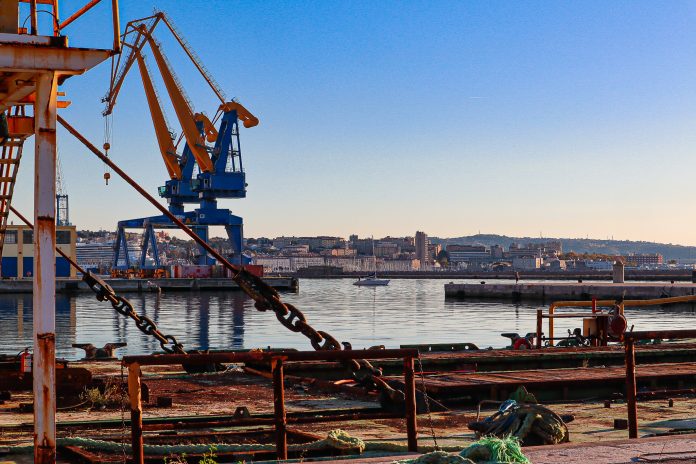by InTrieste
In a bold move to redefine global port logistics, Trieste hosted a landmark conference titled “Port-Rail Integration as a Lever for Port Competitiveness: The Case of Trieste.” Organized by the Port Network Authority of the Eastern Adriatic Sea, the event spotlighted Trieste’s growing reputation as a leader in intermodal transportation, backed by significant European investment.
The conference featured key figures, including Anne Jensen, European Coordinator for the Baltic-Adriatic Corridor; Cristina Amirante, Regional Councillor for Infrastructure of Friuli Venezia Giulia; and representatives from the European Investment Bank, the Italian Ministry of Transport, and RFI, Italy’s rail network operator. Together, they painted a picture of a port at the forefront of innovation, leveraging rail to connect Italy to the heart of Europe.
A Rail-Reliant Hinterland
The Port of Trieste boasts over 200 weekly rail connections linking its facilities to Europe’s industrial hubs. Unlike many of its competitors, Trieste’s rail integration allows seamless cargo handling, with tracks serving all its quays. This strategic infrastructure has positioned the port as a model of intermodal efficiency.
“Trieste is not just a port; it is a gateway to Europe,” said Vittorio Torbianelli, the Port Authority’s extraordinary commissioner. “Our ability to integrate rail infrastructure has transformed logistics into a streamlined, sustainable system.”
Investments That Deliver
Trieste’s rail infrastructure is the beneficiary of over €280 million in investments, funded through national programs and the European Union’s Connecting Europe Facility (CEF). These funds have supported significant upgrades, including modernization of the Campo Marzio station and plans for a new station in Servola.
Recent highlights include the reactivation of the rail link between Aquilinia station and the FreeEste industrial area, a project backed by the European Investment Bank (EIB). This rail link is critical to the establishment of Innoway Trieste, a venture set to manufacture rail wagons at the site of the former Wartsila plant.
Green and Digital Transformation
Beyond rail, the Port of Trieste is investing in a portfolio of 13 European projects worth €53 million. These initiatives target decarbonization, digitalization, and new infrastructure development. Two projects focus on reducing emissions, while seven aim to digitize operations for greater efficiency.
“The future of logistics is green and connected,” said Antonio Gurrieri, CEO of Alpe Adria, a logistics operator integral to Trieste’s success. “Railways are the backbone of sustainable transport, and Trieste has doubled down on this commitment with remarkable results.”
Certifying Excellence
As Italy’s only port rail infrastructure manager, the Port of Trieste recently earned safety certification from ANSFISA, the national railway safety agency. This recognition underscores the port’s emphasis on world-class operations and its commitment to setting new benchmarks in logistics.
A Model for the World
Trieste’s transformation is not just an Italian success story but a potential blueprint for ports worldwide. By combining cutting-edge rail infrastructure with strategic investments and sustainable practices, the port is carving a niche as a global leader in intermodal transport.
As Torbianelli concluded, “Our success lies not just in the size of our investments but in our ability to think strategically and execute with precision. Trieste is proving that with the right vision, ports can lead the way in building a more connected, sustainable world.”






























